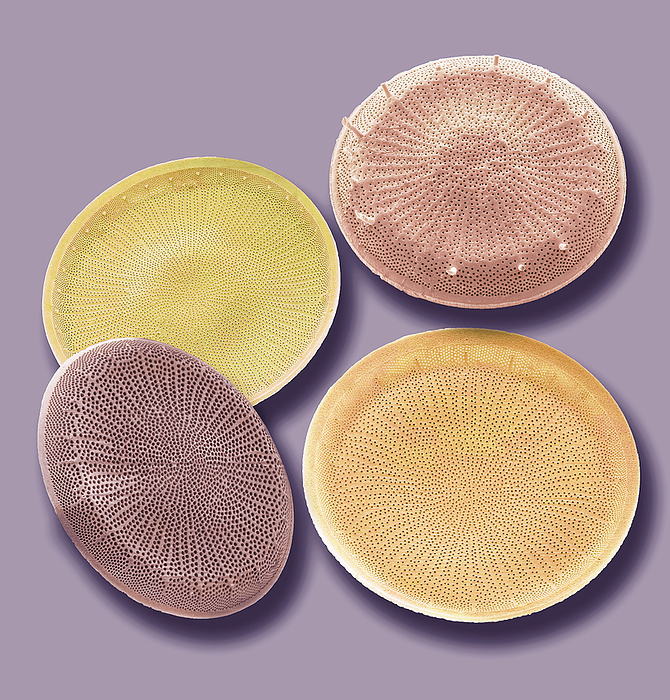
RM
Diatoms, SEM
Diatoms, coloured scanning electron micrograph (SEM). Diatoms are algae that live in houses made of glass. They are the only organism on the planet with cell walls composed of transparent, opaline silica. They produce 20-30% of the air we breathe through carbon fixation. Diatoms remove carbon dioxide from the atmosphere converting it to organic carbon in the form of sugar, and oxygen. Diatoms feed the oceans, lakes and rivers producing long-chain fatty acids and are an important source of these energy rich molecules that are food for the entire food web, from zooplankton to aquatic insects to fish to whales. Diatoms are the most diverse protists on earth. Estimates of the number of diatom species range from 20, 000 - 2 million. Scientists are discovering new species every year. Magnification: x800 when printed 10 centimetres wide., by STEVE GSCHMEISSNER/SCIENCE PHOTO LIBRARY

More
Top Categories
